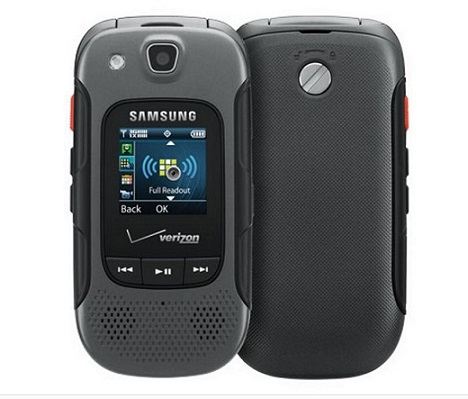
Flip Phones – Tough, Smart, Stylish
Nostalgia moment here. A decade ago, the form factor mattered as much as did the screen resolution and the chip speed do now, to make the smartphone a flagship. There were sliders and side sliders with QUERTY keyboards, and the most stylish of all – flip phones. A brick-shaped gadget that was a 100% loser. This was the way things had been before the iPhone arrived.
Nowadays, because designers focus only on the bezels, angle and the aspect ratio, the flip phones seem to be a long gone. But, are they? Surprisingly, flip phones are thriving- even if only in a narrow segment of the market. Basically, flip phones are divided into two classes: the heavy duty rugged phones for hikers, fishermen, hunters and the like, and then the Asian phones.
Yes, flip phones are extremely popular in China, Korea, and Japan. The leading brands like Samsung and LG are even continuing to introduce new flip models every year because of their popularity. But, first things first: let’s talk about rugged models meant for outback adventures.
Flip phones have an advantage over their fragile touch siblings: the front ‘clam’ protects both the screen and the keyboard when shut, and features a rough casing for easier grip.

Samsung Convoy. Source of the image: s7d2.scene7.com/is/image/SamsungUS/Pdpkeyfeature-sch-u680maavzw-600×600-C1-062016?$product-details-jpg$
A Verizon locked version of this phone sports modern features like voice recognition and commands, Push-to-Talk, and GPS navigation. The battery supports more than 7 hours in standby and talk mode. Meanwhile, you can enjoy your favorite music and videos, since the player supports all the modern codecs including: CMX4.4.5, 72 Poly MIDI, EVRC, QCELP, I-Melody, MP3, AAC, AAC+, EAAC+, M4A, WMA; MP3/MP4; H.263, H.264, MPEG4.
But, that’s not what makes it an amazing phone. Samsung Convoy is dust- and waterproof. Not completely waterproof, but capable of surviving a drop here or there.
If you want to enjoy the ultimate freedom, you should pay attention to Kyocera phones.
Take the new phone that arrived in February this year – Kyocera Torque X01, for example:
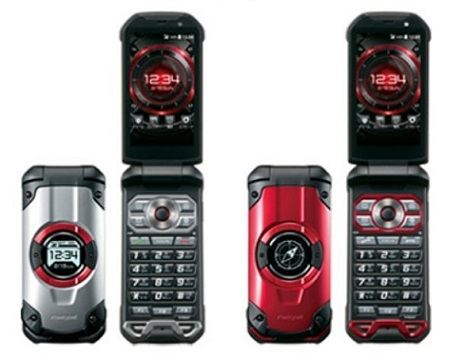
Kyocera phone. Source of the image: http://global.kyocera.com/news/2017/0205_hgio.html
This is the first mobile to meet 18 separate categories of the US military’s MIL-STD-810G procurement standards. Meaning, you can smash it against the wall, jump on it, drown it in a stream, and use it as a weapon. Maybe.
Its 3.4-inch liquid crystal display stands direct sunlight; a 13-megapixel camera supports HD video recording; and with a loud 100 db speaker and large keys, you’ll be able to use it even on a construction site with thick gloves on.
What’s more, Kyocera phones has a highlight feature that iPhones even lack: a Smart Sonic Receiver. There’s no conventional speaker in this phone, (no holes in the casing through which water or dust can penetrate) so instead, the sound wave is generated all over the display glass. You can hear the caller while pressing your ear against any part of the screen. Thus, the whole glass works as a speaker by enhancing the sound quality and volume.
If you’re an outback person, you’ll appreciate built-in apps displaying temperature, altitude, navigation, tides, and “activity level of fish.” With a Snapdragon 1.1GHz SoC, it must be just a childish game for the Kyocera phone.
It has only one drawback; this Kyocera phone is available in Japan only. But, USA residents can buy a younger model Kyocera’s DuraXV+ from Verizon.
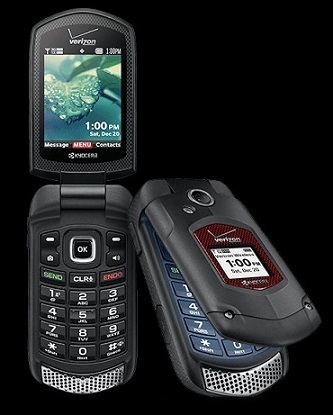
Kyocera duraXV. Source of the image: https://www.kyoceramobile.com/duraxv/
There are two iterations of it: a camera phone featuring 5-megapixel camera and a no-camera version. But, both sport an external bright display, large buttons which are easy to press with gloved fingers and the famous rugged casing. Kyocera’s DuraXV+ is a water-, dust- and shock-proof gadget. With 18 DAYS of stand by battery and 7.7 hours of talk battery life, the city glamour smartphones might just cry.
But, flip phones know some things about style too.
You see, flip phones are very popular in Asia. Especially in Japan and China. The Japanese are a very conservative nation, yes; but they also enjoy a challenge. This form factor is much more challenging for engineers who have to combine the trendsetting modern features with the old-school casing.
The highlight of any Asian flip phone are two touch screens: one on the cover, and one inside. The phones feature both buttons and touch control with rather narrow screens.
The flagship of 2016-2017 is Samsung W2017 “Veyron”. It is powered by Qualcomm’s Snapdragon 820, and sports 4GB of RAM and 64GB of internal storage expandable via microSD.
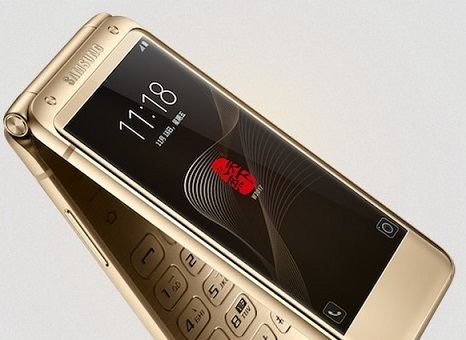
Samsung Veyron. Source of the image: https://cnet4.cbsistatic.com/img/P_7FAXcmV4Tj5TiKwi7WWYlu1xQ=/770×433/2016/11/04/c161208b-740a-455c-8a43-5c7438af4da1/samsung-w2017-3.png
Samsung W2017 featured two 4.2-inch Super AMOLED screens (one inside and one out), the same 12 MP camera S7 shares and 5 MP selfie camera. It has a 2,300 mAh battery. Guess what it will cost? A customer will have to shell out $2,950! I bet, you’ve never heard that Samsung was still introducing flip phones, have you?
When closed, this phone can look rather bulky, ‘overweight’ and strange to the eye. But, it still has some old-time charm to it. It’s not just a mobile; it’s an accessory, much like studs, or a tie pin. Perhaps, the looks are the reason why these clam shaped gadgets are so popular in China. Chinese businessmen don’t appreciate the sweater and jeans Job-like style. They look for something more solid and conventional.
Though experts are witnessing a decline of interest to flip phones even in Asia now, the gadgets are still here. I have my own theory about them, however. I think flip phones satisfy our need to fiddle about with things: pens, pencils, cards and yes, phones. The guy who invented the spinner is a genius. So, flip phones serve like spinners sometimes. It’s pleasant to feel the grip of something smooth and shell-curved in our hands.
We’re tactily tired of slim aluminum and glass planks!

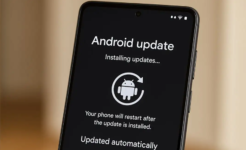
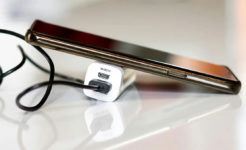
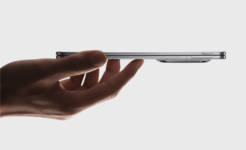
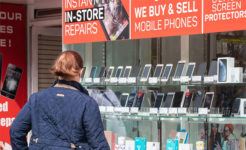

Facebook
Twitter
RSS